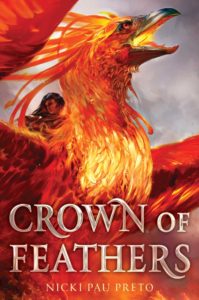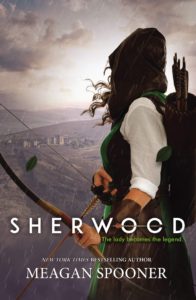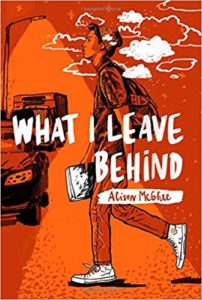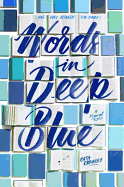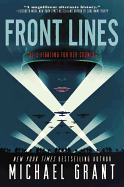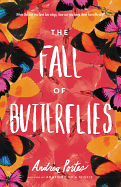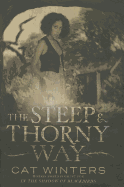Seventeen-year-old Catherine Pulaski knows Zero is coming for her. Zero, the devastating depression born of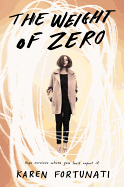 Catherine’s bipolar disease, has almost triumphed once, propelling Catherine to her first suicide attempt. With Zero only temporarily restrained by the latest med du jour, time is running out. In an old ballet shoebox, Catherine stockpiles medications, preparing to take her own life before Zero can inflict its own living death on her again.
Catherine’s bipolar disease, has almost triumphed once, propelling Catherine to her first suicide attempt. With Zero only temporarily restrained by the latest med du jour, time is running out. In an old ballet shoebox, Catherine stockpiles medications, preparing to take her own life before Zero can inflict its own living death on her again.
But Zero’s return is delayed due to unexpected and meaningful relationships that lessen Catherine’s sense of isolation. These relationships along with the care of a gifted psychiatrist alter Catherine’s perception of her diagnosis as a death sentence. This is a story of loss and grief and hope and how some of the many shapes of love – maternal, romantic and platonic – impact a young woman’s struggle with mental illness.
Where did you get the idea for The Weight of Zero? Why did you choose to focus on bipolar disorder rather than clinical depression?
There was no one person or thing or event that inspired this story. I didn’t consciously choose to write about a particular mental illness. Catherine, the main character, just appeared in my head one afternoon during a writing retreat. I knew immediately that she had been diagnosed with bipolar disorder and that she feared life with this condition.
I’ve thought long and hard about why Catherine, why bipolar disorder and why suicide and I think she resulted from a blending of many of my life experiences. First, my husband is a child and adolescent psychiatrist and through him, I’ve learned about illnesses and treatments. Second, my life has been touched by suicide: the first by a work colleague and the second by an extended family member. Finally, I’ve witnessed the mental health journeys of family and friends, a few of which included bipolar disorder.
When I first started writing, I didn’t know that much about this condition, basically just the standard stereotypes so I threw myself into research. I’ve been asked if it was an emotionally difficult task to write this story. It was but not for the obvious reason of being inside a character with suicide ideation. I always knew how Catherine’s story would end. What got to me was the enormous responsibility I felt to make sure this story rang true; that it was authentic, accurate and respectful. I really worried a lot about that and without a doubt was the most difficult part of writing this story.
What do you hope Weight will do for readers?
The first is to reinforce for a reader struggling with any kind of issue is that they are not alone. I’d love for that reader to understand that help is really out there, even if it takes multiple attempts to find it. In The Weight of Zero, there’s a disconnect between Catherine and her first psychiatrist that becomes even more apparent when she forms a bond with her second psychiatrist. This was my vision from the very beginning and one that my editor embraced – this “failure” of care and the existence of quality treatment that might take some effort to find. I also wanted to underscore the tremendous potential when you form a true partnership with your clinician.
In addition, I’d like readers to gain an understanding of bipolar disorder by presenting an accurate portrayal of what many teenagers experience. It was critical to me that readers also appreciate how the stigma of mental illness – the stereotypes and jokes and even innocent phrases – so tremendously hampers treatment. The more aware we are, the more sensitive and respectful we become. These things have to happen if we are going to get mental health issues as mainstream as physical disorders.
What has been your favorite part of having The Weight of Zero published?
Meeting readers! As I write this, I’m less than a week out from the release date so my interaction is a little limited but I’ve done a number of appearances and have gotten to speak to readers who are awaiting the book’s release. It’s been incredibly moving to hear their reasons on why they want to read Catherine’s story and quite frankly, I’ve been blown away by their honesty. There have also been several reviews that have moved me to tears – the recognition of Catherine’s fears and struggles and equally as important, the sense of hope and optimism that the story has imparted.
I wanted this book to make conversations about mental illnesses a little easier and I’ve been floored at the response this story generates. Friends, work colleagues, neighbors, readers, potential readers, booksellers and librarians, basically anyone I spoke to about this story has had the same reaction. I give the synopsis, say the words “bipolar disorder,” “depression” and “anxiety” and the expression on their face immediately changes. The responses have been immediate: “Oh, my son/sister/ daughter has that” or “I struggle with anxiety/depression.” That was how little it took, a thirty-second summary, to open the door to an open and honest discussion.
Why did you include a history project in this story and what was its impact on Catherine?
I was very much influenced by a paper that I wrote in school about Judy Chicago and her struggles as a female artist in the male-dominated art world of the 1960s and ‘70s. She turned to women in history for inspiration and strength but was also infuriated at how so many of their contributions had been omitted from mainstream history and culture. Her artwork, The Dinner Party, was her response.
When I set out to write The Weight of Zero, I wanted Catherine to draw inspiration and strength from a historical figure so I used a school project as a way to introduce this character. In my research, I focused initially on the D-Day Invasion and by complete luck found an article about the four women buried in the Normandy American Cemetery. Three of these women are from the 6888th Central Postal Directory Battalion, the first all female, all African-American unit to serve overseas. These soldiers suffered horrible prejudice especially in the 1940s because they were women, they were black and serving in a segregated military. And like so many accounts of women in general and during World War II, they remain basically unknown.
In The Weight of Zero, Catherine is inspired by the fictional character of Private Jane Talmadge, who is based on the recollections of members of the Six-Triple-Eight. Talmadge suffers tremendous prejudice – horrific racism and sexism – yet still forges on despite the stigma. Catherine draws on Talmadge’s example for strength to battle the mental health stigma she experiences.
Do you have any plans for future projects?
I’m finishing another serious yet hopeful contemporary young adult novel that looks at a young woman’s experience at the often-dangerous intersection of mental health and law enforcement. Bipolar disorder is at the heart of this story too but this time it’s seen through the eyes of a sibling and it examines the secret prejudices we may carry.
Save
Save
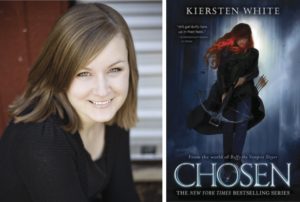 Bookshop is so excited to announce that the amazing Kiersten White, author of some of our favorite tiles will be visiting Bookshop Santa Cruz on Friday, January 10th at 7pm.
Bookshop is so excited to announce that the amazing Kiersten White, author of some of our favorite tiles will be visiting Bookshop Santa Cruz on Friday, January 10th at 7pm.
